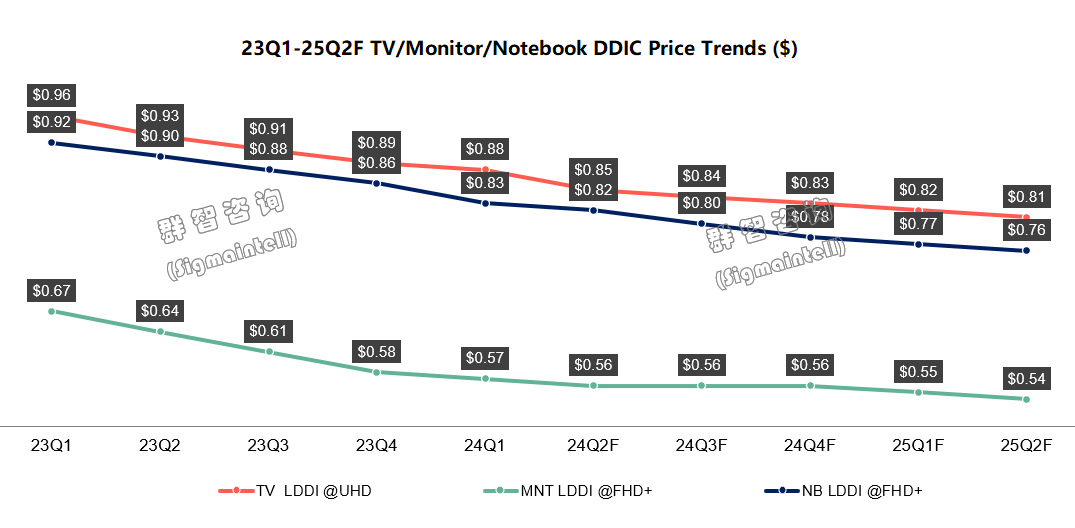In the OLED DDIC field, as of the second quarter, the share of mainland design companies rose to 13.8%, up by 6 percentage points year-on-year.
According to the data from Sigmaintell, in terms of wafer starts, from 23Q2 to 24Q2, the market share of Korean manufacturers in the global OLED DDIC market decreased by 15.9 percentage points year-on-year, from 68.9% to 53.0%; the share of Taiwanese manufacturers rose by 11.0 percentage points year-on-year, from 19.7% to 30.8%; the share of mainland Chinese manufacturers rose by 6.3 percentage points year-on-year, from 7.5% to 13.8%. The above-mentioned share changes are particularly evident in the mainland Chinese mobile phone terminal market.

Samsung LSI, due to maintaining its supply position of OLED DDIC in Samsung and Apple mobile phones, is expected to still hold the top market share position in the long term. However, since 2020, mainland Chinese terminal and panel manufacturers have actively cooperated, enabling the market share of Taiwanese design manufacturers in OLED DDIC to increase rapidly. As a result, the market share proportion of Samsung LSI has continued to decline. It is expected that this trend will weaken in 24H2 as the demand for rigid OLED mobile phones rebounds.
Novatek has established OLED DDIC supply relationships with most mainland Chinese panel and terminal manufacturers, and its market share has continued to increase in the past eight quarters. After entering the supply chain of the Apple iPhone series, Novatek's market share will further grow. It is expected that iPhone series orders will contribute approximately 9% of Novatek's OLED DDIC shipments in 2024, and this proportion is expected to increase further from 2025. Relatively, in the mainland Chinese market, Novatek faces continuous pursuit from manufacturers such as Raydium and Ilitek. Its market share in mainland Chinese terminals is expected to decline slightly in 2024.
Mainland Chinese design manufacturers such as Visionox, Chipone, and ESWIN have all had products in mass production at the terminal and are continuously and actively striving for more verification opportunities. Due to factors such as geopolitics, terminals have certain demands for the stability of the upstream supply chain of DDIC (such as wafer supply). The cooperative relationship between mainland Chinese design manufacturers and local wafer foundries has certain advantages. Meanwhile, Korean manufacturers such as LX Semicon and Magnachip have also begun to cooperate with mainland Chinese wafer foundries such as SMIC and Shanghai Huali to strive for the market share of mainland Chinese terminals. It is expected that within the next 2-3 years, the competitive landscape of the OLED DDIC market will continue to diversify, and for design manufacturers, this also means that price competition will persist.
Post time: Aug-06-2024

